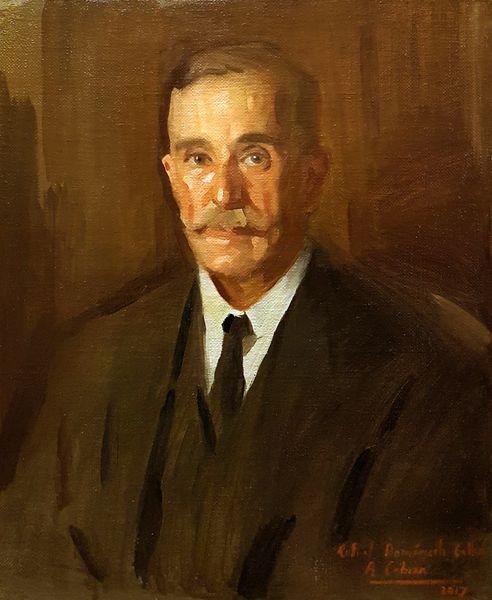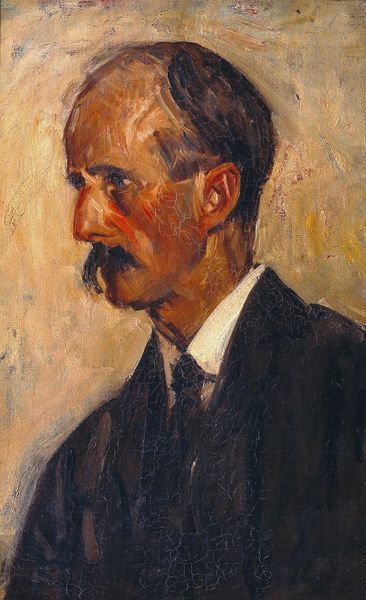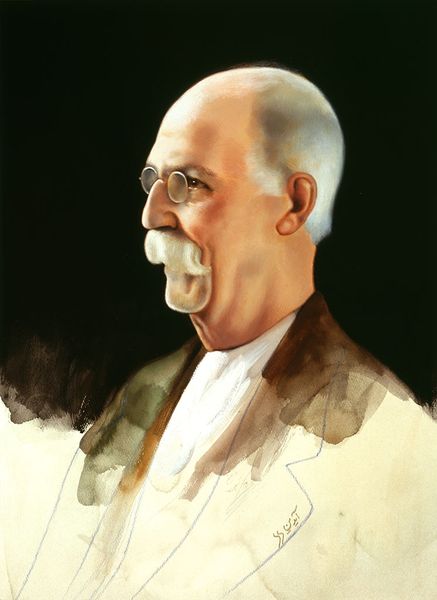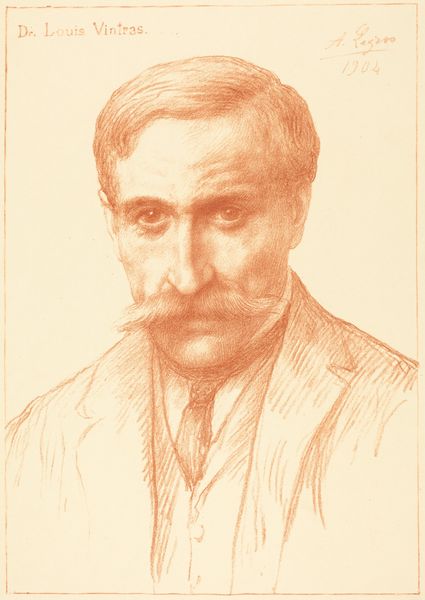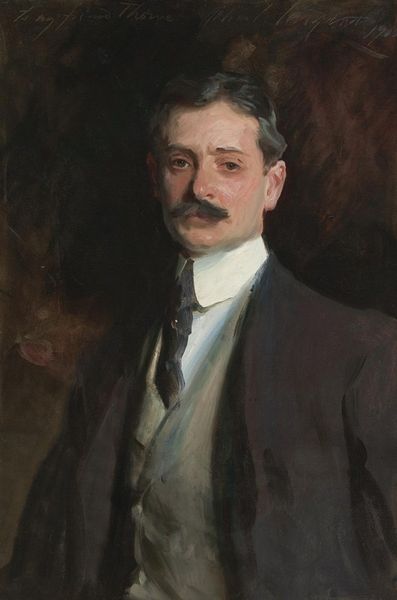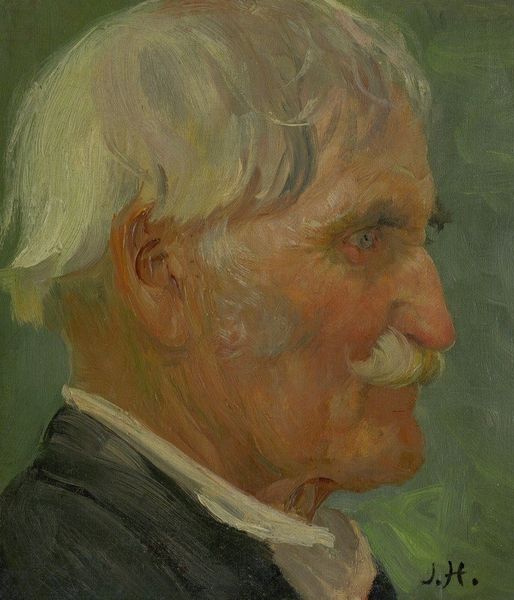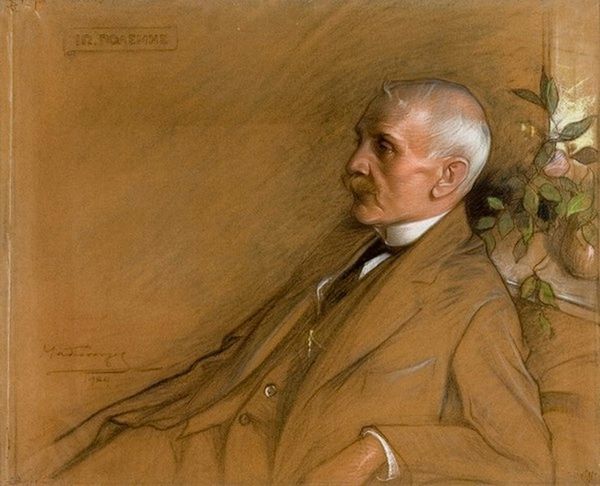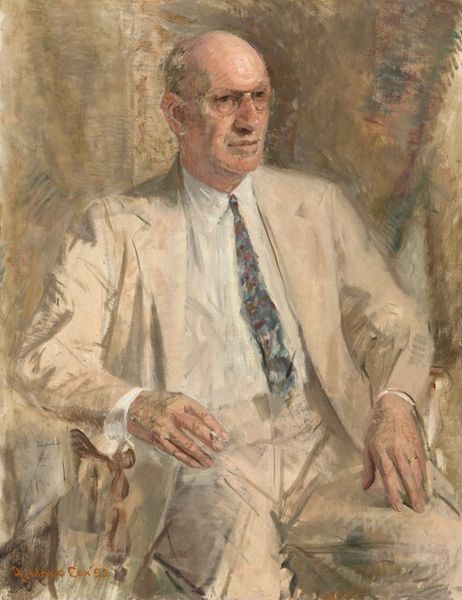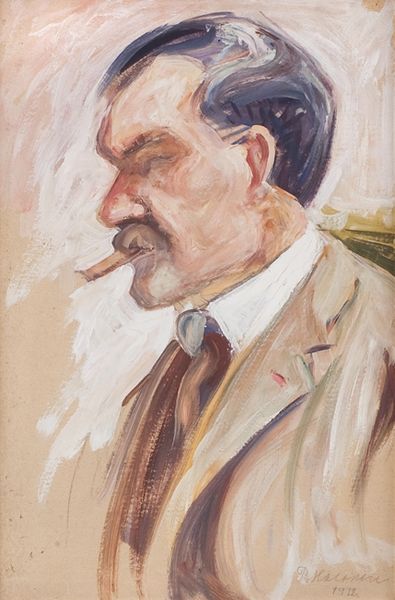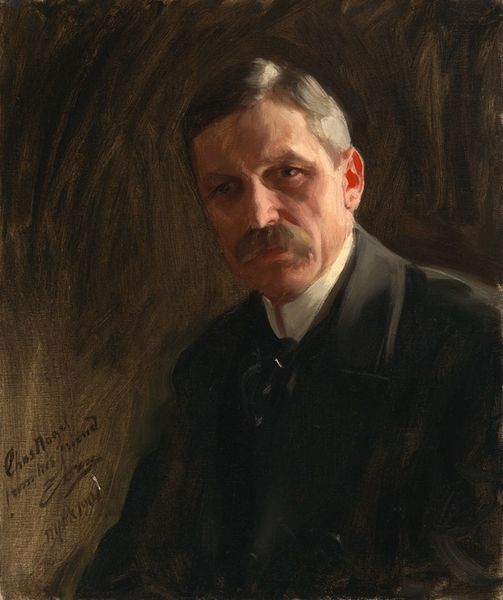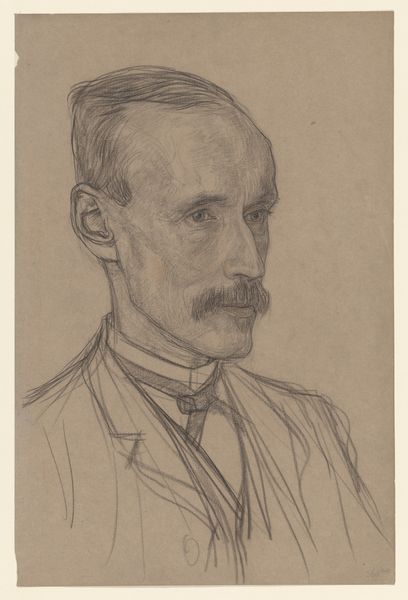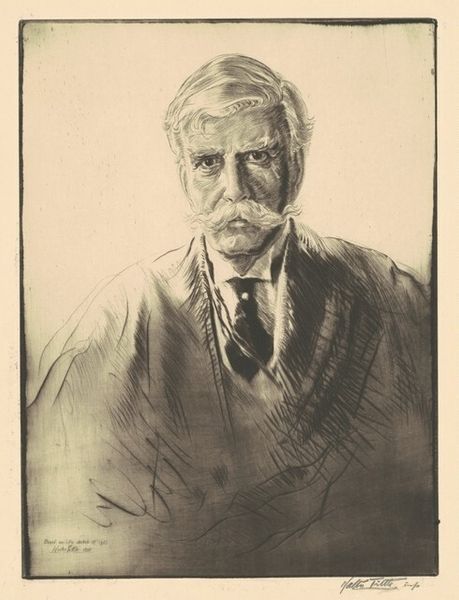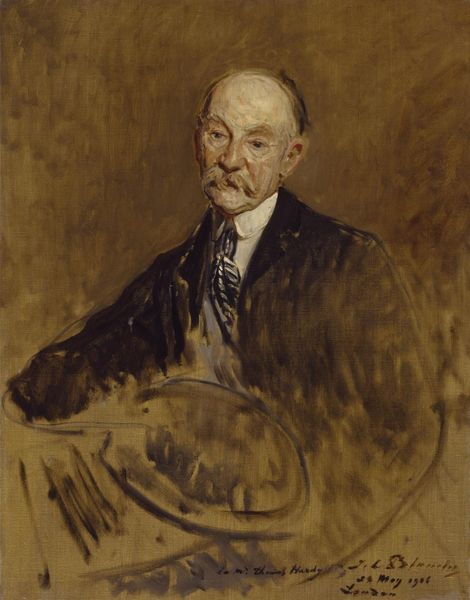
oil-paint
#
portrait
#
oil-paint
#
oil painting
#
academic-art
#
portrait art
#
realism
Dimensions: overall: 74.93 × 50.17 cm (29 1/2 × 19 3/4 in.)
Copyright: National Gallery of Art: CC0 1.0
Curator: Looking at Philip Alexius de László's "Andrew W. Mellon," an oil portrait from 1932, one is immediately struck by the subject’s austere profile against the subdued background. Editor: The colors are really muted, aren’t they? Browns, tans, off-whites... it gives a sense of…old money. The palette seems deliberately restricted. I wonder, what statement is being made about power and capital, given Mellon's position at the time? Curator: Observe how de László uses brushstrokes to define the planes of Mellon's face. Notice how light catches the bridge of his nose, highlighting the formality and precision in the draftsmanship. It adheres quite closely to the principles of academic realism. Editor: That precise depiction feels intentional, particularly for Mellon, who was, of course, Secretary of the Treasury during the Great Depression. There’s a stark contrast between this polished image and the social realities of 1932. The subtle way he is depicted certainly tells of an image that Mellon was trying to convey. Curator: De László’s strategic use of chiaroscuro, or light and shadow, is effective at building three-dimensionality, especially considering the restricted palette. The darker tones surrounding his face amplify its presence, emphasizing the subject's stern countenance. It creates visual interest through subtle variations. Editor: But doesn't it also distance him? That controlled lighting isolates him in a way. I'm struck by how even his white mustache and neatly combed hair seem meticulously managed. And is there something implicitly problematic about immortalizing a wealthy man during an economic crisis? What voices are conspicuously absent? Curator: Well, regardless of its impact, technically, the piece achieves a certain mastery within the confines of portraiture tradition. One can see that a deliberate hand created and managed the artwork, that its composition serves a purely aesthetic end. Editor: Agreed. Yet I feel the need to constantly re-situate artwork in its particular historical and cultural place, while critically looking at the art for power dynamics and forgotten perspectives. Thanks for walking me through it today. Curator: Of course, there's value in both formal appreciation and cultural critique when analyzing art. Thank you.
Comments
No comments
Be the first to comment and join the conversation on the ultimate creative platform.
